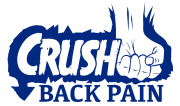Herniated discs in the neck can cause neck pain, arm pain, and pain between the shoulder blades.
The discs in the neck are a little different compared to the discs in the lumbar spine. The nucleus pulposus (inside of the disc) makes up 25% of the disc. The annulus fibrosus (outside of the disc) makes up 75% of the disc. In the lumbar spine it’s 50%/50%. The discs in the neck comprise 25% of the height of the cervical spine. This results in a large range of motion for the neck. It’s important to have adequate cervical range of motion so we are able to use our eyes and ears effectively.
So the cervical discs have less nucleus pulposus to start with. The nucleus pulposus is the part of the disc that herniates. As we age the nucleus pulposus in the cervical discs starts to dry out. When a person is in their 30’s the inside of the disc (nucleus pulposus) starts to dry out. By the time a person is in their 40’s an MRI will show what is often termed disc degeneration. This is completely normal. It’s basically age related drying out of the nucleus pulposus. Most of the time the nucleus pulposus will be more or less dried out by the time a person is in their 50’s or 60’s.
Even with less fluid in the cervical discs and the discs drying out with age they still herniate.
In the lumbar spine a phenomenon called spontaneous regression occurs and is well documented in the medical literature. Spontaneous regression basically refers to the disc herniation going away on it’s own.
This is not as well documented in the cervical spine, although it does happen. Primarily with an extruded disc. An extruded disc refers to a part of the nucleus pulposus pushing out of the annulus fibrosus. In the cervical spine herniated discs that are not extruded don’t usually undergo spontaneous regression.
To check out medical literature regarding cervical disc herniation and spontaneous regression look into the links below.
Regression of cervical disc herniation observed on magnetic resonance images
Spontaneous regression of herniated cervical disc
Spontaneous regression of a herniated cervical disc in a patient with myelopathy. Case report
The prognostic course of cervical disc herniations is good. 83% of people who have a herniated cervical disc with related arm pain get better.
On average there is a considerable reduction in pain within 4-6 months of a cervical disc herniating. Complete resolution of symptoms occurs within 2-3 years. This is without any type of surgery or injections. The link below covers the usual prognosis and course of cervical herniated discs.
To recap. Cervical herniated discs can undergo spontaneous regression if they’re extruded.
If they’re not extruded the disc herniation completely going away is less likely. You can have herniated cervical discs and be pain-free and have full mobility. Cervical herniated discs heal and become pain-free more than 80% of the time. This does not happen quickly though. 4-6 months from onset to symptoms relief and 2-3 years until complete resolution of symptoms. According to the medical literature.
For more videos that show you how to beat back pain subscribe to the Crush Back Pain channel


